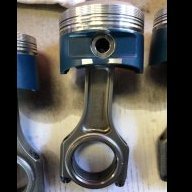Pros & Cons Of Not Running A Bov
Announcements
-
Similar Content
-
Latest Posts
-
And what you pay for a pack of 8 bolts and nuts at Bunnings, will land me 200 of the same nuts and bolts from a fastener shop. M12 * 1.25 IS a standard. It's not like ordering M12x1.25 and hoping the thread pitch is right. Unlike ordering an ounce, will get you 4 different amounts depending on which ounce someone takes it to be. Your issue is a supply issue.
-
I believe that is correct
-
By Dose Pipe Sutututu · Posted
Try using Penrite 80W140, has Limslip predosed into it -
The studs are needed to run the splash plates/ full length baffle plates do you have a link to which foam you used? I have seen autosport had the yellow stuff that’s E85 safe. https://www.autosport.com.au/fuel-tank-foam
-
Don't you have specialist fastener warehouses? I can point to a non-trivial number of them in my city of 1.5 mllion people. Sassafras agencies is a 2 minute walk from my office. United Fasteners is almost exactly halfway between my work and my house, so less than 15km from each. All metric sizes, all SAE sizes, all materials, all thread pitches, all form factors. I know the street address of one and have walked into and bought stainless bolts, nuts and washers from, 2000km away in a regional centre in Western Australia with a population of <200000. Only mugs buy their fasteners at hardware stores. Our version of Lowes or the orange hellzone is called Bunnings. A rip off merchant of cheaply made exclusive home brand Chinese excreta of the first order. We can walk into Blackwoods, which is the Oz equivalent of Grainger, and get robbed blind, but at least it's getting robbed blind on proper industrial grade gear.
-





Recommended Posts
Create an account or sign in to comment
You need to be a member in order to leave a comment
Create an account
Sign up for a new account in our community. It's easy!
Register a new accountSign in
Already have an account? Sign in here.
Sign In Now